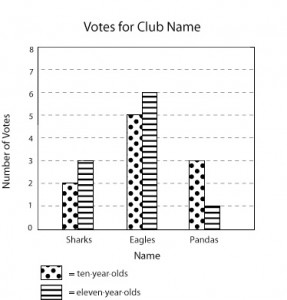Graph Investigation Questions
When looking at a graph, you think what’s the rule? What’s the pattern? What is the shape of the graph? It is increasing or decreasing? What’s the y and x intercepts? If you drew a line or curve through the points and extended the graph in both directions, what would the x- and y-intercepts be, if possible? And are there any values of x or y which are not possible in the function? Additional questions that we can ask is if this graph be a function. To test this, you would do something called the vertical line test, which a a vertical line anywhere in the graph and if it hits 2 y values at 1 x value, it doesn’t not pass and it’s not a function. To pass, it must hit y once at every x value.
Functions
In the view of functions, you have to find the rule for the relationships of these functions. For example, if you want Pepsi, and the code was C4, you put in C4 and you get a Pepsi. Seems like it’s working right? Well let’s say you want a Pepsi again and you put the same code and you get … a Coke!!! It was working last time I came?! If this happens, then it’s not a function. If you were to put C4 twice and got a Pepsi twice, then it’s a function. So let’s say you go to another soda machine and get a Pepsi by pressing D2. Then come back and Push B3 for a coke and you get … A Pepsi! But, it’s still a function if D3 gives you Pepsi all the time as long if 1 input (the Code (ex.C4)) only gives you 1 input like a Pepsi.
Scientific Notation
In Scientific Notation, you find out how large the number will become by the exponent of 10. In order to do Scientific Notation, the factor has to be a power of 10 and the decimal must be 1<x<10. For example, say the equation was 2.95×10 by the power of 2. You move the decimal to the right twice and it equals 295. The difference between 3 by the power of 8 and 3×10 by the power of 8 is simple. Use scientific notation. So move the decimal to the right 8 times and that equals 300,000,000. 3 by the power of 8 is 3x3x3x3x3x3x3x3 which =6.561.
Simplifying Exponet Expressions
Simplify x6 × x5. The ” x6 ” means “six copies of x multiplied together”, and the ” x5 ” means “five copies of x multiplied together”. So if I multiply those two expressions together, I will get eleven copies of x multiplied together. That is:
x6 × x5 = (x6)(x5)
= (xxxxxx)(xxxxx) (6 times, and then 5 times)
= xxxxxxxxxxx (11 times)
= x11
Thus:
x6 × x5 = x11 (you add the exponents in this situation)
Simplify the following expression:
6^8 / 6^5. The exponent rules tell me to subtract the exponents. But let’s suppose that I’ve forgotten the rules again. The ” 68 ” means I have eight copies of 6 on top; the ” 65 ” means I have five copies of 6 underneath.
Top Bottom
(6×6×6×6×6×6×6×6) / (6×6×6×6×6)
How many extra 6’s do I have, and where are they? I have three extra 6’s, and they’re on top. Then:
(6×6×6) / 1 = 6^3 (subtract the exponents in this situation)
Simplify the following expression:
t^10 / t^8
How many extra copies of t do I have, and where are they? I have two extra copies, on top:
(t×t)/1 = t^2
Simplify: 5^3 / 5^9
How many extra copies of 5 do I have, and where are they? I have six extra copies, underneath: 1/(5×5×5×5×5×5) = 1 / 5^6








Leave a Reply